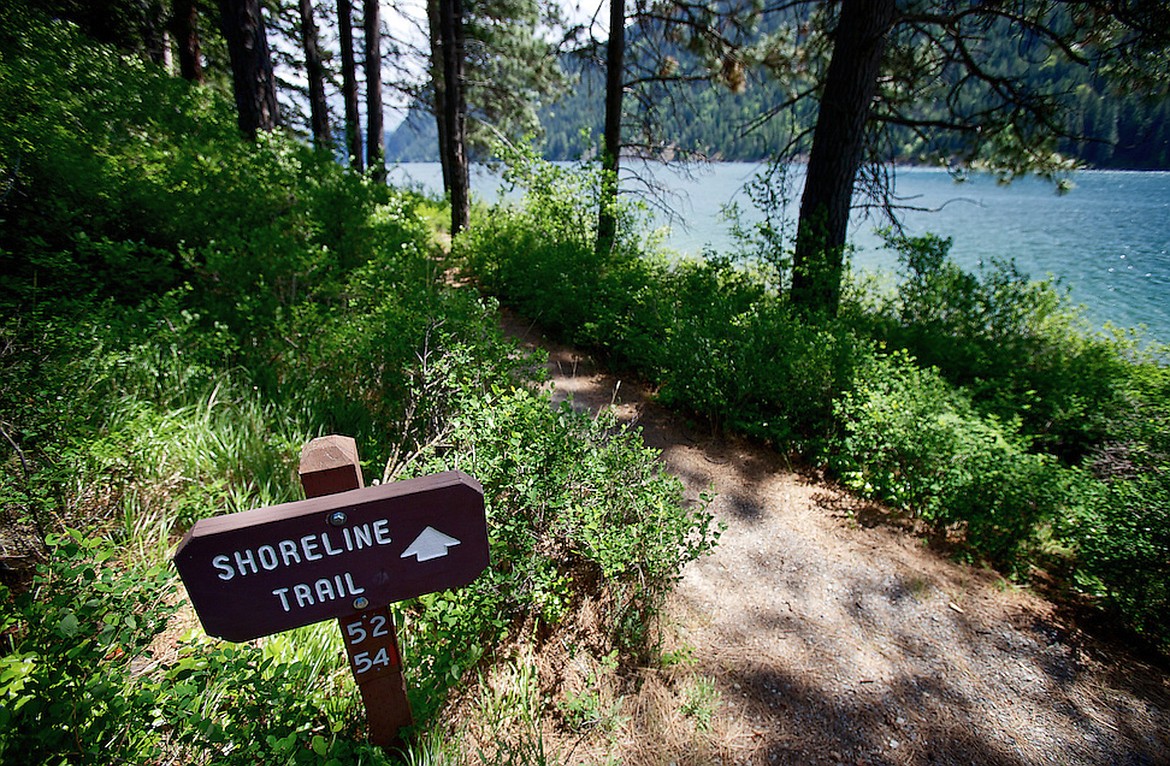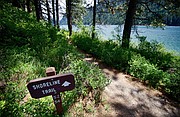North Idaho's parks generate $25 million for economy
By RALPH BARTHOLDT
Staff Writer
The Trail of the Coeur d’Alenes is a 72-mile paved bicycle path that runs between Mullan and Plummer.
Between May and October bicyclers jump on at trailheads that join the trail near Interstate 90, state highways 3 and 5, and U.S. 95.
The trail meanders for much of its length along the Coeur d’Alene River, and bicyclers get a chance at seeing moose, deer and elk, coyotes, bears and a lot of birds — including ospreys, tundra swans, shorebirds and geese.
That is the word from the travel brochures.
To local residents the Trail of the Coeur d’Alenes is mostly known for its day trippers, who bicycle ride segments during the weekend, or on summer afternoons, to stretch their legs, push their lungs and gather peace of mind.
And although it runs through a great stretch of North Idaho green space — including along the Chain Lakes between Rose Lake and Harrison, and through Heyburn State Park, where bicyclers can soak up the solemnity of remote spots that motorists don’t see — there’s more greenery associated with the trail than what is found in its backcountry.
It’s called moolah, greenbacks, hard currency.
According to a recent study by the state of Idaho and Boise State University on the economic impact of the state’s parks in 2016, the trail infuses around $500,000 annually into the local economy.
The money comes from bike clubs, groups and families who visit just for a chance at putting tread on the trail.
“They spend it on hotels, restaurants and camping,” Kathleen Durfee, the park manager at the Old Mission State Park and the Trail of the Coeur d’Alenes, said.
Groups such as Ride Idaho — a Boise bicycle adventure group that brings 200 to 300 people to the trail every few years — book caterers, hotels and camping spots for group members. Other bicycle and inline skating groups use the trail each year.
“They are dumping a lot of money into the local area,” Durfee said.
According to the study released last month, visitors to Priest Lake’s parks spend more than $5 million annually, visitors to Round Lake State Park south of Sandpoint spend $2 million annually, visitors to Farragut State Park annually spend around $13 million that is injected into the area economy, and visitors who drop by the Old Mission State Park in Cataldo spend around $771,000 locally. That includes buying memorabilia and booking the site for weddings.
The number of visitors to Heyburn State Park has jumped around 30 percent over the past decade, and it isn’t just summertime visitors, Ron Hise, park manager said.
“Just the other day I saw a guy riding the Trail of the Coeur d’Alene’s, taking advantage of the weather,” Hise said.
Winter users hike the park’s trail system and park in its lots as they head onto the lake to fish.
The park logged 170,000 visitors last year. The numbers are down from a high of close to 180,000 a year earlier, but usage has increased steadily over the past 20 years, Hise said.
For a lot of summer users the park is a base camp, as they launch boats and travel to Harrison, Conkling Park, St. Maries, or visit the Coeur d’Alene Casino.
“They buy gas, groceries or meals,” Hise said. “We don’t ask them those kind of questions, but I know it happens.”
Visitors to Heyburn State Park at the southern end of Lake Coeur d’Alene infused the economy with around $6 million, according to the study.
They spent most of their money at grocery stores, or buying fuel, sporting goods, souvenirs and going to restaurants.
Within a 50-mile radius of a state park, money also went into vehicle maintenance and medical care.
In all, more than 5.5 million visitors spent $127 million by hitting the state’s 25 parks, from North Idaho’s Priest Lake to Harriman near the gateway to Yellowstone and Massacre Rocks in southern Idaho.
The state’s parks sustain more than 3,000 jobs and generate $88 million in wages, salaries and benefits, according to the report.



